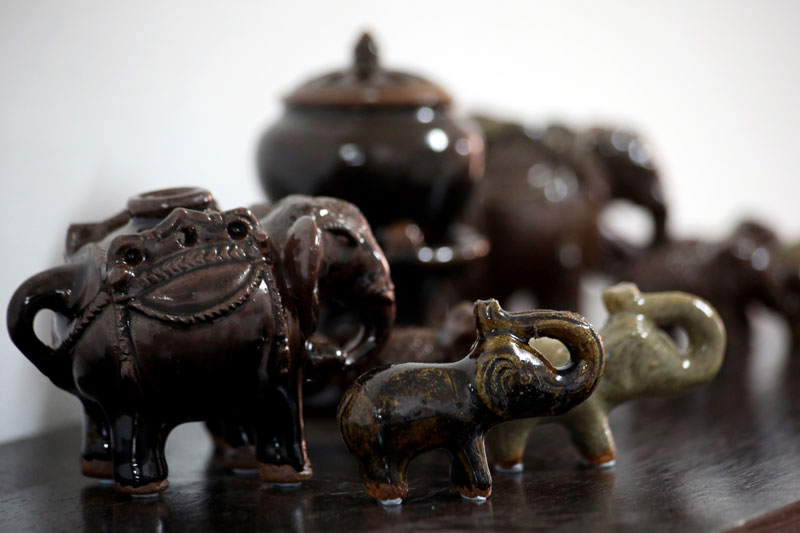Once common in Phnom Penh, trucks and oxcarts laden with terracotta pots are becoming an increasingly rare sight.
Villagers in Kompong Chhnang province—the heartland of Cambodia’s pottery-making tradition—have for generations created earthenware for sale across the country.

But as competition from imported ceramics and the lure of better-paid positions at garment factories threatens to destroy the centuries-old craft, artisans have begun a push to ensure it is preserved.
Last night, an exhibition opened at Cambodian Living Arts, a Phnom Penh-based organization that promotes cultural practices past and present, documenting how Kompong Chhnang communities are adapting to suit today’s market.
Villagers traditionally make pots during the dry season, when they have time away from the rice paddies and clay dries more quickly in the hot sun. Without a modern wheel to rely on, they must walk in circles around clay to shape earthenware pieces that are then baked one at a time in open-air outdoor fires.
Over the past decade, dozens of families in the province’s Sre Thmei commune—known for its high-quality clay—have embraced new pottery techniques.
Since 2009, a group of Japanese potters has been training residents of Andong Russei village in modern practices, while pottery wheels and large kilns, capable of firing up to 700 objects at once, have been installed to speed up the task.
During the process, each piece is plunged into glazes to create a colorful sheen and the finished products feature intricate designs.
Hiroshi Ake, from the Japanese-funded Cambodian Traditional Pottery Project, said the aim was to help villagers boost their incomes.
“We hope [to encourage] village potters to run their own business and [to see] the number of potters who are engaged in glazed pottery production increase,” he said.
Bruce Fairman, the founder of the Khmer Artisan Project, which has trained 10 village families in modern techniques, said locally available materials were used to build the artisans’ high-temperature kiln and workshop in an effort to ensure its long-term survival. It took project leaders and the local community eight years to complete.
“What we’re trying to do is preserve the area’s original heritage as much as possible because it’s a dying art,” the American potter said by telephone from California.
“There are a number of women in their late 30s to 50s, but when they’re gone who will replace them?”
The wholesale price for earthenware is as little as 500 to 1,000 riel per pot. In contrast, small glazed bowls, which sell for $6 in shops, can net a potter 7,000 riel ($1.75), while a larger pot can fetch them as much as 50,000 riel ($12.50).
Ke Sokkien, 52, a long-time potter who joined the Khmer Artisan Project, said although elaborate ceramics were more difficult to craft than earthenware, tourists preferred them. “Before we couldn’t get enough money when we sold our pots to the buyers but now the price has increased and we’re happy,” she said. “I can use this money to help my family. I can make nearly as much money from selling pots as rice farming.”
Aptly entitled Chhnang!, the Khmer word for pot, the Cambodian Living Arts exhibition runs until June 30.




